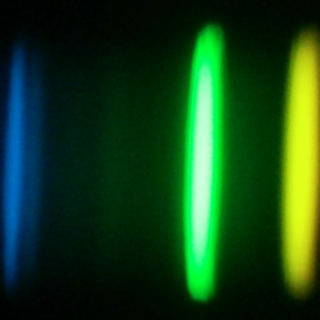Bibcode
Dhillon, V. S.; Bezawada, N.; Black, M.; Dixon, S. D.; Gamble, T.; Gao, X.; Henry, D. M.; Kerry, P.; Littlefair, S. P.; Lunney, D. W.; Marsh, T. R.; Miller, C.; Parsons, S. G.; Ashley, R. P.; Breedt, E.; Brown, A.; Dyer, M. J.; Green, M. J.; Pelisoli, I.; Sahman, D. I.; Wild, J.; Ives, D. J.; Mehrgan, L.; Stegmeier, J.; Dubbeldam, C. M.; Morris, T. J.; Osborn, J.; Wilson, R. W.; Casares, J.; Muñoz-Darias, T.; Pallé, E.; Rodríguez-Gil, P.; Shahbaz, T.; Torres, M. A. P.; de Ugarte Postigo, A.; Cabrera-Lavers, A.; Corradi, R. L. M.; Domínguez, R. D.; García-Alvarez, D.
Bibliographical reference
Monthly Notices of the Royal Astronomical Society
Advertised on:
10
2021
Citations
78
Refereed citations
73
Description
HiPERCAM is a portable, quintuple-beam optical imager that saw first light on the 10.4-m Gran Telescopio Canarias (GTC) in 2018. The instrument uses re-imaging optics and four dichroic beamsplitters to record $u_{\rm s}\, g_{\rm s}\, r_{\rm s}\, i_{\rm s}\, z_{\rm s}$ (320-1060 nm) images simultaneously on its five CCD cameras, each of 3.1-arcmin (diagonal) field of view. The detectors in HiPERCAM are frame-transfer devices cooled thermo-electrically to 183 K, thereby allowing both long-exposure, deep imaging of faint targets, as well as high-speed (over 1000 windowed frames per second) imaging of rapidly varying targets. A comparison-star pick-off system in the telescope focal plane increases the effective field of view to 6.7 arcmin for differential photometry. Combining HiPERCAM with the world's largest optical telescope enables the detection of astronomical sources to gs ~ 23 in 1 s and gs ~ 28 in 1 h. In this paper, we describe the scientific motivation behind HiPERCAM, present its design, report on its measured performance, and outline some planned enhancements.
Related projects
![Izquierda - Imagen RGB de la nebulosa de Orión y M43 obtenida filtros estrechos con la cámara WFC en el INT: H alfa (rojo), [S II] 6716+30 (verde), [O III] 5007 (azul). Derecha - Imagen en falso color de la nebulosa planetaria NGC 6778. En azul se ve la emisión en la línea de O II tomada con el filtro sintonizable azul del instrumento OSIRIS en el GTC; en verde imagen con el filtro estrecho de [O III] del Nordic Optical Telescope (NOT). Izquierda - Imagen RGB de la nebulosa de Orión y M43 obtenida filtros estrechos con la cámara WFC en el INT: H alfa (rojo), [S II] 6716+30 (verde), [O III] 5007 (azul). Derecha - Imagen en falso color de la nebulosa planetaria NGC 6778. En azul se ve la emisión en la línea de O II tomada con el filtro sintonizable azul del instrumento OSIRIS en el GTC; en verde imagen con el filtro estrecho de [O III] del Nordic Optical Telescope (NOT).](/sites/default/files/styles/crop_square_2_2_to_320px/public/images/project/imagen_web.jpg?itok=fsBmV9CO)
Physics of Ionized Nebulae
The research that is being carried out by the group can be condensed into two main lines: 1) Study of the structure, dynamics, physical conditions and chemical evolution of Galactic and extragalactic ionized nebulae through detailed analysis and modelization of their spectra. Investigation of chemical composition gradients along the disk of our
Jorge
García Rojas

Binary Stars
The study of binary stars is essential to stellar astrophysics. A large number of stars form and evolve within binary systems. Therefore, their study is fundamental to understand stellar and galactic evolution. Particularly relevant is that binary systems are still the best source of precise stellar mass and radius measurements. Research lines
Pablo
Rodríguez Gil

Black holes, neutron stars, white dwarfs and their local environment
Accreting black-holes and neutron stars in X-ray binaries provide an ideal laboratory for exploring the physics of compact objects, yielding not only confirmation of the existence of stellar mass black holes via dynamical mass measurements, but also the best opportunity for probing high-gravity environments and the physics of accretion; the most
Montserrat
Armas Padilla

Exoplanets and Astrobiology
The search for life in the universe has been driven by recent discoveries of planets around other stars (known as exoplanets), becoming one of the most active fields in modern astrophysics. The growing number of new exoplanets discovered in recent years and the recent advance on the study of their atmospheres are not only providing new valuable
Enric
Pallé Bago

Chemical Abundances in Stars
Stellar spectroscopy allows us to determine the properties and chemical compositions of stars. From this information for stars of different ages in the Milky Way, it is possible to reconstruct the chemical evolution of the Galaxy, as well as the origin of the elements heavier than boron, created mainly in stellar interiors. It is also possible to
Carlos
Allende Prieto